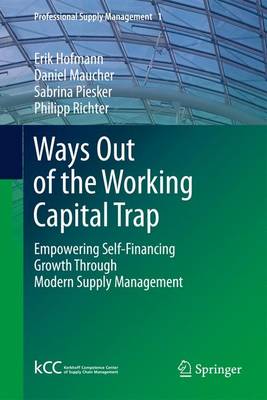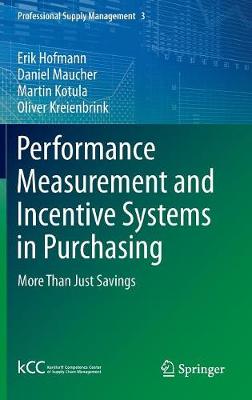Professional Supply Management
3 primary works
Book 1
Ways Out of the Working Capital Trap
by Erik Hofmann, Daniel Maucher, Sabrina Piesker, and Philipp Richter
Especially in times of an economic boom following a crisis, companies have to deal with the phenomenon of the "working capital trap," which signifies a company's increasing need for financial liquidity in times of hindered access to debt capital, caused by the increasingly restrictive credit approval processes of financial institutions. As a consequence of cost savings, this situation is often reinforced by a low level of inventory.
This book takes up the problem and shows ways of escaping the "trap" by identifying and strengthening in-house financing potential. First, different operating ratios will be introduced. These refer to the amount of capital committed to the flow of goods and to the amount of in-house financing possible. Subsequently, methods for consolidating in-house financing that are affected by procurement processes will be presented from the company's and the supply chain's perspective.
From a company's perspective, the methods for consolidating the amount of in-house financing over the following topics: The Management of Payment Terms, Inventory Management and Product Group and Supplier Management
From the supply chain's perspective, the following methods for extending the possible amount of in-house financing will be discussed: Finance-Oriented Supply Chain Sourcing, Supply Chain-Oriented Supplier Financing, Collaborative Cash-to-Cash Management, Collaborative Cash Pooling and Netting, Supply Chain Financing Platforms.
The conceptual models will be clarified using a practical example from the automobile industry. Finally, the "Procurement Value Added" (PVA©) approach will be presented, a concept that measures the contribution of procurement to the company's success.
Book 2
Capital Equipment Purchasing
by Erik Hofmann, Daniel Maucher, Jens Hornstein, and Rainer den Ouden
Compared to other main groups of procurement, capital equipment features numerous characteristics that significantly impact the purchasing process. The process of purchasing capital equipment therefore requires specific attention and above all a systematic approach. To overcome these challenges, a holistic process model and specific tools and methods for capital equipment purchasing are presented.
The following topics regarding capital equipment purchasing are presented:
• Compliance management
• Savings measurement
• Life cycle costs and total cost of ownership
• Determining the optimum useful life and replacement time
• Real options approach for the evaluation of investment alternatives
• Performance contracting
Readers are provided with a comprehensive and structured process model for capital equipment purchasing. The comprehensive set of methods including various instruments and methods presented in this book support the establishment of a professional capital equipment purchasing process.
Book 3


